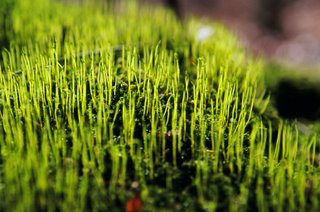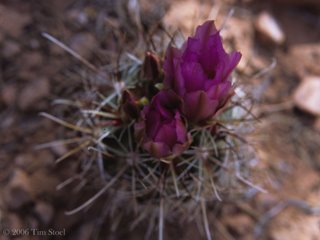If you want to have pictures showing blurred motion, like having people walking appear as a blur, a tripod is required, and a slow shutter speed on the camera. Another cool thing to do if you have a tripod is nighttime photography, where the shutter is left open for a number of minutes, and the ambient light illuminates the subject. This works well on a night with a full moon.
Anytime you're going to get really close to something, a tripod is a good idea. This picture was taken in fairly low light in a forest, less than a foot from the moss. Without a tripod it would have never turned out well.




